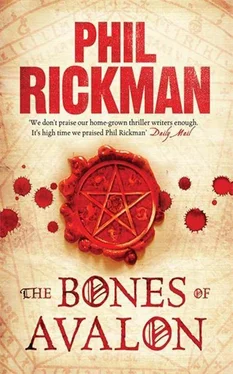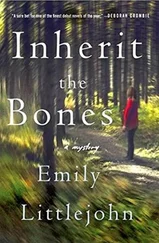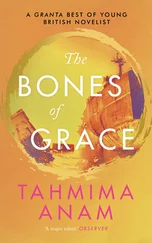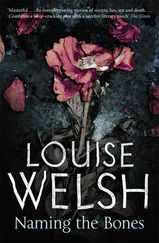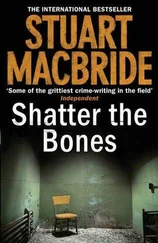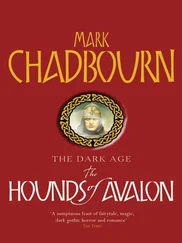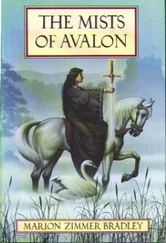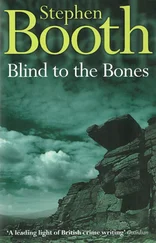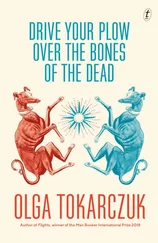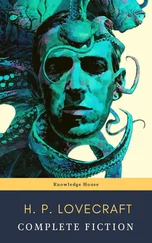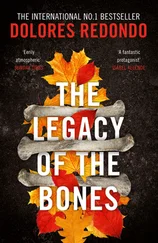Ormond House - The Bones of Avalon
Здесь есть возможность читать онлайн «Ormond House - The Bones of Avalon» весь текст электронной книги совершенно бесплатно (целиком полную версию без сокращений). В некоторых случаях можно слушать аудио, скачать через торрент в формате fb2 и присутствует краткое содержание. Жанр: Исторический детектив, на английском языке. Описание произведения, (предисловие) а так же отзывы посетителей доступны на портале библиотеки ЛибКат.
- Название:The Bones of Avalon
- Автор:
- Жанр:
- Год:неизвестен
- ISBN:нет данных
- Рейтинг книги:4 / 5. Голосов: 1
-
Избранное:Добавить в избранное
- Отзывы:
-
Ваша оценка:
- 80
- 1
- 2
- 3
- 4
- 5
The Bones of Avalon: краткое содержание, описание и аннотация
Предлагаем к чтению аннотацию, описание, краткое содержание или предисловие (зависит от того, что написал сам автор книги «The Bones of Avalon»). Если вы не нашли необходимую информацию о книге — напишите в комментариях, мы постараемся отыскать её.
The Bones of Avalon — читать онлайн бесплатно полную книгу (весь текст) целиком
Ниже представлен текст книги, разбитый по страницам. Система сохранения места последней прочитанной страницы, позволяет с удобством читать онлайн бесплатно книгу «The Bones of Avalon», без необходимости каждый раз заново искать на чём Вы остановились. Поставьте закладку, и сможете в любой момент перейти на страницу, на которой закончили чтение.
Интервал:
Закладка:
I think I’ve said that his ailing wife, Amy, lived in the country.
This was true, but not in any great style. Even after ten years, Dudley had kept postponing plans to set his wife up in a grand house, and she seemed to spend her time at the homes of friends or relatives, journeying from one to another.
With Dudley at Windsor with the Queen, Amy has been found dead at the bottom of a flight of stairs in Oxfordshire. Her neck is broken.
Dudley maintains she’d been unwell for some time. What he’s never spoken of are the rumours that she was being poisoned, with at least one doctor refusing to attend her because he feared for his own life whether she was cured or dead.
The staircase down which Amy is said to have fallen apparently is quite short. Dudley tells me in his letter that her bones were made thin and fragile by some malady in her breast.
God help me, John, but I had no part in it. I swear she was ill. I swear I loved her and always will…
The Queen, meanwhile, is said to be recovered from her nightmares.
‘What happens now?’ I said to Blanche, when we were alone.
‘She’s ordered full mourning at court while in a constant state of barely concealed merriment. She thinks they’ll marry. I have my doubts.’
There’s to be an inquest. No danger that Dudley will be implicated… except in the minds of everyone in Europe.
The inquest is also unlikely to hear of a story I heard not from Blanche but from my mother, who had it from a relative of Goodwife Faldo whose sister is maid to a minor lady-in-waiting.
The crux of it is that, only days ago, the Queen told the Spanish ambassador that Dudley would soon be free to marry her as his wife was close to death.
Nostradamus again?
Given the alternative explanations of the Queen’s foresight, just for once I’d dearly like to think this was something from Michel’s mist of perceiving.
Strange to think that under different circumstances, we might even have worked together to uncover the secrets of Arthur’s round table. Such matters are beyond religion and matters of state. I’ll make a point, now, of acquiring all the manuscripts of Leland I can afford.
One day, if the boundaries of science are pushed that far, I may even be equipped to talk to Abbot Whiting.
He was standing next to you for several moments.
Not much use to a dull and bookish man who has not the sight.
I fold Dudley’s letter and walk out of my mother’s house and into the orchard, where a hare lopes across my path.
Notes and Credits
Many elements in this story are part of recorded history – Dee’s background, his relations with Bonner and Dudley. Carew, Cowdray and Joan Tyrre all existed.
And the Queen did visit Dee at Mortlake, several times, although she didn’t go into the house. Dee would often bring out items to demonstrate to her what he was working on.
Three major biographies should be mentioned: John Dee, The World of an Elizabethan Magus, by Peter J. French, John Dee, Scientist, Geographer, Astrologer and Secret Agent to Elizabeth I by Richard Deacon and, most recent and best, The Queen’s Conjurer by Benjamin Woolley.
The surviving diaries of John Dee don’t really begin until many years after the events recorded in this book, but do offer many clues about his character, particularly his paranoia, often turning to anger, at other people’s attitudes to his work. Dee’s distaste for spectator bloodsport is more than hinted at (along with his fondness for cats) when he doesn’t exactly shed tears over the collapse of a stand at Paris Gardens, causing the death of a number of bear-baiting fans on a Sunday. ‘The godly expowned it as a due plage of God for the wickedness there usid and the Sabath day so profanely spent.’
Some of Dee’s eccentric spelling has been modernised, as has some of his terminology.
The incident of the wax doll, with Dee called in, is mentioned by some biographers, although they suggest it happened some years later than Dee’s account here. Given Walsingham’s talent for the clandestine, either it was covered up for years or there was an earlier case.
The story of Joan Tyrre and the faerie folk is recorded in several volumes on the history of witchcraft, including Christina Hole’s authoritative Witchcraft in England and Keith Thomas’s magisterial Religion and the Decline of Magic. Joan lived in Taunton but Dee’s experience of her later activities in Glastonbury is hardly surprising.
The full story of Lord Neville and the hiring of a psychic contract killer is wonderfully told in Alec Ryrie’s The Sorcerer’s Tale, perhaps the best book yet about magic and criminality in Tudor times.
There’s little evidence that the concept of the Glastonbury Zodiac was floated by anybody before Kathryn Maltwood in the 1930s. However, the Dee connection is widely mentioned and given as fact in the late Richard Deacon’s 1968 biography, which quotes Dee’s observation that ‘the starres which agree with their reproductions on the ground do lye onlie on the celestial path of the Sonne, moon and planets, with notable exception of Orion and Hercules… this is astrologie and astronomie carefullie and exactly married and measured in a scientific reconstruction of the heavens which shews that the ancients understoode all which today the lerned know to be factes.’
It has to be said that this is seriously questioned by other biographers, including Benjamin Woolley, author of the excellent The Queen’s Conjuror, some even suggesting that Deacon made it up. But why would he? The great Glastonbury historian, Geoffrey Ashe, who remains unconvinced about the existence of the Zodiac, seems nevertheless to have been the first – in his book Avalonian Quest – to link the line in a Nostradamus quatrain:
‘In the land of the great heavenly temple’ to the idea of a terrestrial Zodiac. The Nostradamian scholar John Hogue’s suggestion that this refers to a temple of Apollo which once stood on the site of Westminster Abbey is a bit lame, especially as the phrasing suggests a location away from London. And, as Geoffrey Ashe notes, even Stonehenge was not known at the time as an astronomical temple or observatory.
The best book I found on Nostradamus himself was Ian Wilson’s Nostradamus: the Evidence.
John Leland: the facts, as given by Dee, are largely provable. Leland did provide information for Thomas Cromwell. He did return to Glastonbury after the Dissolution, with an over-ambitious project in mind. And he did go mad, almost certainly regretting the way his information had been used. It’s suggested he might have been overwhelmed by the enormity of the topographical task he’d taken on.
Leland was also well into the hidden.
Wool-sorters’ disease would later be called anthrax.
Ignis sacer, the holy fire, is a recorded phenomenon, caused by the grain fungus later known as ergot, a natural hallucinogen used in the twentieth century during the development of LSD. It was known as St Anthony’s Fire after an eleventh-century religious order was founded, in the name of St Anthony, to help the large number of people in the south of France afflicted by convulsions, madness and that awful burning sensation.
You can find much about this in Andy Roberts’s history of LSD, Albion Dreaming.
Nicholas Culpeper, born in 1616, was the first in ‘modern’ England to write of the links between astrology and herbalism, though such beliefs were obviously common in Dee’s time. Culpeper’s Herbal is still available.
For help with Elizabethan speech, my thanks to the master linguists, David Crystal and Ben Crystal, author of the fascinating Shakespeare on Toast. Also Jo Fletcher and Kathy McMullen. Sadly, I had to ignore much of the advice to help Dee meet the new level of clarity to which he aspired in telling this story. Because we’re unable to hear Elizabethan speech – which was unlikely to follow Shakespeare’s iambic pentameter – a strict adherence to Elizabethan written structures and terminology would only have made it sound stilted in ways it never would have been at the time.
Читать дальшеИнтервал:
Закладка:
Похожие книги на «The Bones of Avalon»
Представляем Вашему вниманию похожие книги на «The Bones of Avalon» списком для выбора. Мы отобрали схожую по названию и смыслу литературу в надежде предоставить читателям больше вариантов отыскать новые, интересные, ещё непрочитанные произведения.
Обсуждение, отзывы о книге «The Bones of Avalon» и просто собственные мнения читателей. Оставьте ваши комментарии, напишите, что Вы думаете о произведении, его смысле или главных героях. Укажите что конкретно понравилось, а что нет, и почему Вы так считаете.
